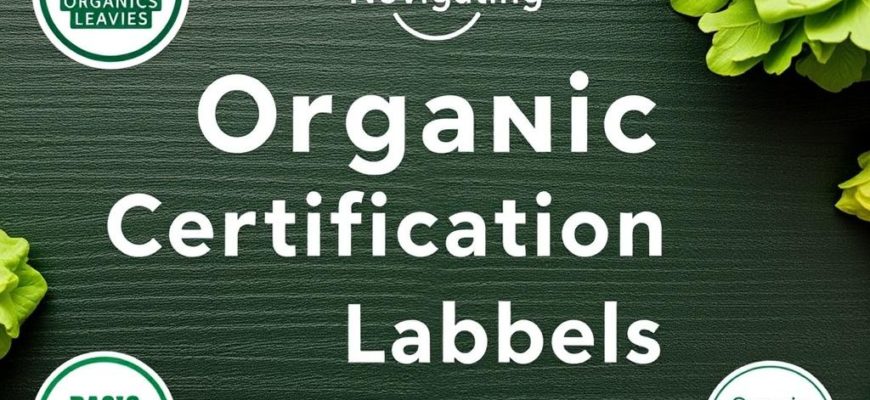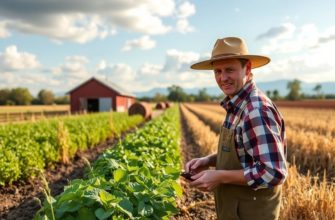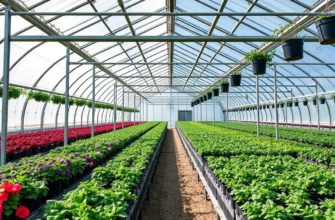Международное название:
Синонимы:
Характеристики:
| Сложность: | |
| Цикл развития: | |
| Световой режим: | |
| Режим полива: | |
| Температура: | |
| Почва: | |
| Ключевая черта: |
Цвет листвы
Цвет бутонов
Размеры цветка
Систематика:
| Домен: | |
| Царство: | |
| Отдел: | |
| Класс: | |
| Порядок: | |
| Семейство: | |
| Род: |
Organic certification can feel like a foreign language: seals, acronyms, and rules that vary by country. If you’ve ever stood in a grocery aisle holding two seemingly identical jars and wondered which one is truly “organic,” you are not alone. This article is written to walk you through the maze with a friendly, step-by-step tone. We’ll explain common labels, what they guarantee (and what they don’t), how certification works for farmers and processors, how to read packaging like an insider, and practical tips for buying, selling, or transitioning to organic practices. By the time you finish, you’ll have a clear, confident sense of how to spot trustworthy labels, what questions to ask at the farmers market, and how certification systems protect both consumers and producers.
- Why Organic Labels Matter (and Why They Can Be Confusing)
- Common Organic Seals and What They Mean
- Major National Government Seals
- Private and Specialty Labels
- Key Label Terms You’ll See on Packages
- How Organic Certification Works: Step-by-Step for Producers
- Initial Decision and Record-Keeping
- The Transition Period
- Application and Inspection
- Certification, Ongoing Compliance, and Renewal
- Costs and Timeline
- What Inspectors Look For: The Practical Details
- Understanding Label Nuances: What You Can and Can’t Expect
- “Organic” Does Not Always Mean “Pesticide-Free”
- Animal Welfare Variability
- Local Does Not Equal Organic
- Practical Tips for Consumers: Reading Labels Like a Pro
- Questions to Ask Your Farmer
- Organic Certification for Processors and Retailers
- International Trade: When Organic Standards Meet Borders
- Common Challenges and Criticisms of Organic Certification
- Cost Barriers for Small Farmers
- Fraud and Mislabeling
- Complexity and Consumer Misunderstanding
- Balancing Environmental and Social Goals
- Costs, Subsidies, and Economic Realities
- Practical Checklist for Farmers Considering Certification
- How Labels Evolve: Trends to Watch
- Practical Buying Guide: Prioritize What Matters to You
- Frequently Asked Questions
- Is “organic” the same everywhere?
- Can organic products contain additives?
- Are organic foods healthier?
- How do I spot greenwashing?
- Resources and Where to Learn More
- Conclusion
Why Organic Labels Matter (and Why They Can Be Confusing)
Organic labels exist to communicate standards — rules about how a product was grown, raised, or processed. For many shoppers, those rules translate to promises about pesticide use, synthetic inputs, animal welfare, soil health, and environmental stewardship. But labels are also shorthand. Behind each seal is a specific set of requirements, a certification organization, inspection routines, and a chain of custody that verifies the claim from soil to shelf. That complexity is good for accountability but can be confusing for everyday consumers.
Part of the confusion comes from language: terms like “natural,” “pesticide-free,” and “local” sound meaningful but are often not regulated the way “certified organic” is. Another source of confusion is the multitude of national and private standards. A “Certified Organic” apple from one country may be subject to different rules than a “Bio” apple from another. Add in transitional certifications, private labels, and import rules, and you have a landscape that rewards a little knowledge.
This article will clarify the most common labels, explain the certification steps and costs, and give you practical shopping tips so the next time you reach for that jar of peanut butter, you’ll know what you’re getting.
Common Organic Seals and What They Mean
Organic certification programs differ by country and by the organization that runs the program. Below is an overview of widely seen labels and the core promises they usually carry.
Major National Government Seals
- USDA Organic (United States): This indicates compliance with the USDA National Organic Program. Products labeled “100% organic” must contain only organic ingredients. “Organic” products must contain at least 95% organic ingredients. “Made with organic ingredients” means at least 70% organic ingredients; such products cannot display the USDA seal.
- EU Organic Logo (European Union): Indicates compliance with EU organic regulations. Organic products generally must contain at least 95% organic ingredients for the label to use the term “organic.”
- Canada Organic Regime (Canada Organic): Products with the Canada Organic logo comply with Canadian organic standards; similar percentage rules apply to ingredient makeup.
- Japan Agricultural Standards (JAS) Organic: JAS organic certification is required to use the organic label in Japan and on certain exports.
- Australia Certified Organic (ACO) and Australian Organic: These are commonly seen seals in Australia that signal compliance with national standards.
Private and Specialty Labels
- Demeter (Biodynamic): Demeter certification covers biodynamic practices, which include organic rules plus additional regenerative agriculture and farm holistic planning standards.
- Soil Association (UK): A respected private certifier that often has stricter animal welfare or social criteria in addition to EU organic baseline rules.
- Certified Naturally Grown: A peer-review model used by small growers in North America; similar practices to organic but with different verification processes aimed at small-scale producers.
- Non-GMO Project Verified: Focuses on genetic modification rather than organic inputs; many products combine Non-GMO and organic certifications.
Key Label Terms You’ll See on Packages
- 100% Organic: Only organic ingredients and processing aids are used.
- Organic: At least 95% of ingredients are organic; remaining ingredients are restricted lists of non-organic allowed substances.
- Made with Organic Ingredients: At least 70% organic ingredients. Cannot display the main national organic seal on the front (in many jurisdictions).
- Natural: Not a regulated synonym for organic. May or may not mean anything specific depending on jurisdiction.
How Organic Certification Works: Step-by-Step for Producers
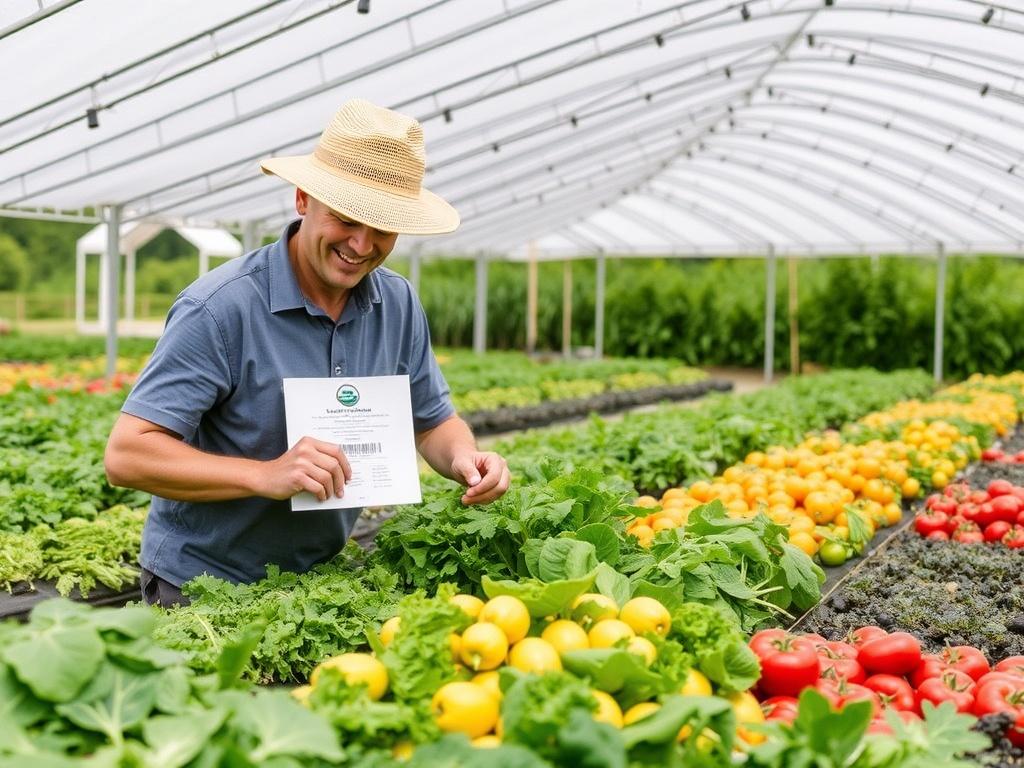
For farmers and processors, certification is a process that creates legal accountability. It verifies that production practices comply with a defined standard. Below is a typical pathway most applicants follow, though details (forms, fees, transition periods) vary by certifier and country.
Initial Decision and Record-Keeping
When a producer decides to go organic, the first real action is to set up documentation. This includes land history (pesticide use, crops grown), supplier lists, seed sources, animal records, and planned rotations. Keeping meticulous records is essential because inspectors will review them to confirm practices.
The Transition Period
Most programs require a transition period — commonly three years for land to be considered organic. During this time, the land must be managed without prohibited substances; however, the products cannot yet be sold as certified organic until the transition completes.
Application and Inspection
Applicants submit an organic system plan that outlines practices, inputs, and how the farm will comply with standards. A certifier reviews the plan, then schedules an on-site inspection. Inspectors look at fields, storage, processing facilities, animal housing, and records. After inspection, the certifier either grants certification or identifies non-compliances that must be corrected.
Certification, Ongoing Compliance, and Renewal
Certification is typically granted for one year and requires annual inspection. Random inspections and residue testing may also occur. If non-compliance is discovered, corrective actions and sometimes fines or suspension can follow.
Costs and Timeline
Certification costs can include application fees, inspection fees (travel and time), annual certification fees, and possible testing costs. For smaller farms, cost-share programs exist in some jurisdictions to help cover fees.
Below is a simplified table to summarize typical timelines and costs (these are examples and will vary widely by region).
| Stage | Typical Timeline | Typical Cost Range |
|---|---|---|
| Preparation & Record Setup | 1–6 months | Minimal to moderate (internal labor) |
| Transition Period | 3 years (land) | Ongoing production costs; potential yield changes |
| Application & First Inspection | 3–12 months (application to certification) | $500–$5,000+ depending on size and travel |
| Annual Renewal & Inspections | Every 12 months | $300–$3,000+ per year |
What Inspectors Look For: The Practical Details
Inspection is more than a quick walk-through. Inspectors verify compliance with soil health practices, pest management, seed sources, livestock feed, withholding periods for veterinary drugs, and cleaning protocols to avoid contamination with prohibited substances.
Important practical checks include:
- Field boundaries and buffer zones to prevent contamination from neighboring non-organic fields.
- Storage facilities to ensure organic products are separated from non-organic and labelled properly.
- Records of input purchases (fertilizers, seeds, pest control products) to ensure only approved substances were used.
- Animal housing and rotational grazing records, including feed sources to confirm organic feed over required percentages.
- Processing flows and cleaning schedules for processors, particularly when dealing with shared equipment.
Understanding Label Nuances: What You Can and Can’t Expect
Labels guarantee certain practices, but they don’t answer every question consumers might have. Here are common misunderstandings and clarifications.
“Organic” Does Not Always Mean “Pesticide-Free”
Organic farmers can use certain organically approved pesticides. The difference is that these are generally derived from natural sources and have restricted use, while conventional farms may use synthetic pesticides that are prohibited in organic systems. Organic certification emphasizes minimizing chemical inputs and using prevention and cultural practices first.
Animal Welfare Variability
Most organic standards include animal welfare provisions—access to outdoors, pasture for ruminants, and limits on confinement. However, welfare specifics (e.g., stocking densities, enrichment, transport) can differ between standards. Some private labels add stricter welfare criteria.
Local Does Not Equal Organic
“Local” refers to proximity of production, not production methods. A local apple can be conventional or organic; a certified organic product may be imported from far away. Decide which attributes matter most to you: localness, organic certification, fair labor, or smaller carbon footprint.
Practical Tips for Consumers: Reading Labels Like a Pro
Here are concrete strategies to use while shopping.
- Look for official seals. National organic seals indicate legal oversight. Private seals can add useful guarantees but check what they mean.
- Read the ingredient statement. If a multi-ingredient product says “organic” but many ingredients are not listed as organic, it may be “made with organic ingredients.”
- Check percentages. “Organic” usually means at least 95% organic ingredients. “Made with organic ingredients” often means at least 70% organic content.
- Ask vendors at farmers markets about certification vs. participation in small-farm peer programs. Small growers sometimes choose Certified Naturally Grown because certification costs are lower and community oversight is strong.
- Watch for misleading terms: “natural,” “no chemicals,” and “pesticide-free” are not regulated in the same way as organic in many places.
- For imported organic products, look for equivalence agreements or dual certification marks that show the product meets both exporting and importing country rules.
Questions to Ask Your Farmer
When you talk to a farmer or vendor, honest conversations reveal a lot. Consider asking:
- Are you certified organic? If yes, which certifier?
- Are you in transition to organic? If so, what stage?
- What pest management practices do you use?
- Where do you source seeds and feed?
- How do you manage soil fertility and crop rotation?
Organic Certification for Processors and Retailers
For companies that blend or package food, organic certification is about supply chain transparency and segregation. Processors must ensure organic ingredients are tracked, that non-organic ingredients are excluded where required, and that cleaning and storage protocols prevent cross-contamination.
Key considerations for processors include:
- Chain of custody documentation from suppliers.
- Segregated storage areas and clear labeling.
- Cleaning records and allergen controls.
- Supplier verification and audit trails.
Retailers who want to market private-label organic products need to ensure contracts and supplier certifications are in place and that their auditors can trace ingredients back to certified farms or processors.
International Trade: When Organic Standards Meet Borders
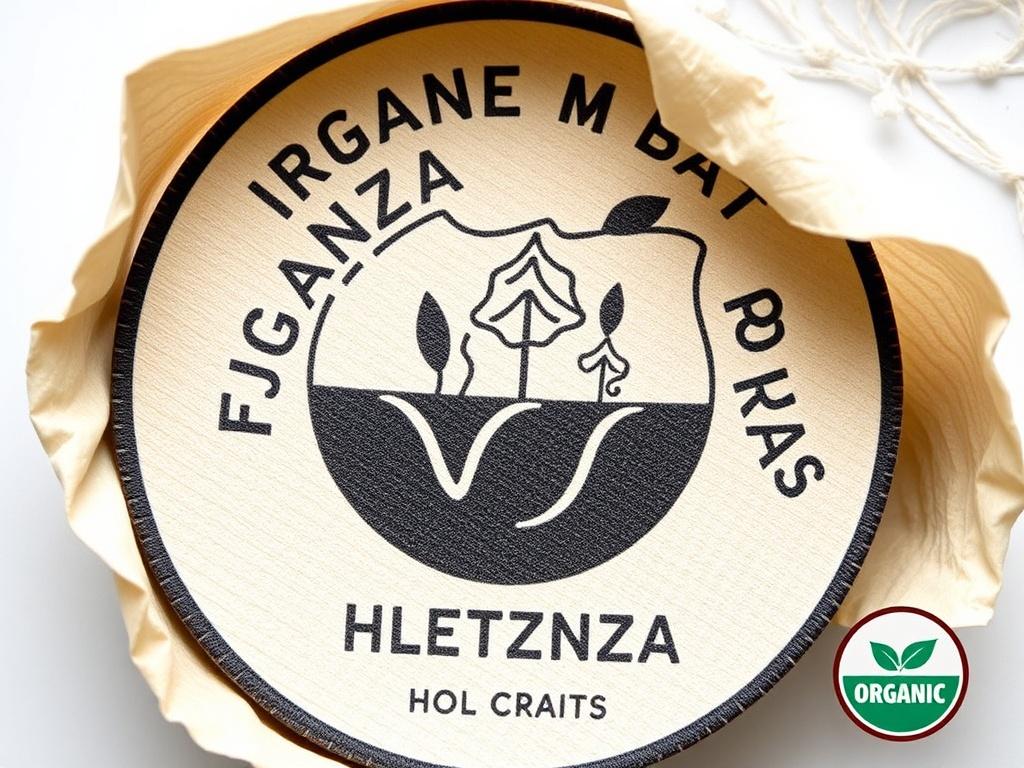
Organic trade is complicated by differing standards. Many countries have organic equivalency agreements that allow products certified in one country to be sold as organic in another without dual certification. However, these agreements are limited and subject to negotiation.
When buying imported organic goods, be aware of:
- Equivalency arrangements and which countries are covered.
- Import certificates and traceability documentation.
- Potential differences in allowed inputs or animal welfare rules.
If a product bears multiple seals (for example, USDA Organic and the EU logo), it often means the product or its supply chain has met both standards or that the importer has arranged for dual certification.
Common Challenges and Criticisms of Organic Certification
No system is perfect. Organic certification faces challenges, and knowing them helps keep expectations realistic.
Cost Barriers for Small Farmers
Certification fees and administrative burdens can be high compared to margins on small farms. Cost-share programs exist, but they vary. Peer-review models help smaller producers avoid prohibitive costs but sometimes are not recognized by larger distributors.
Fraud and Mislabeling
Fraudulent labeling can occur. Governments and certifiers invest in audits, inspections, and occasional DNA or residue testing to combat fraud. As a consumer, buying from trusted sellers or local certified farms reduces risk.
Complexity and Consumer Misunderstanding
The multiplicity of labels and marketing claims leads to confusion. Education, clear labeling rules, and consumer outreach by certifiers and retailers can help.
Balancing Environmental and Social Goals
Organic standards generally focus on environmental practices and animal welfare but may not address labor conditions or fair pricing. Some private labels or combined certifications (organic + fair trade) aim to add those social dimensions.
Costs, Subsidies, and Economic Realities
Switching to organic can involve yield changes, new equipment, and different labor needs. For farmers, the first year after surrendering synthetic chemicals often requires more intensive management. Over time, improved soil health and integrated pest management can reduce costs and stabilize yields.
Some governments offer financial assistance for transition, certification cost-share, or technical assistance. Producers should research national and local programs and consider market access: certified organic products often command a price premium, but local demand and distribution channels matter.
Practical Checklist for Farmers Considering Certification
Below is a step-by-step checklist to help growers assess readiness.
- Review current land and input history for prohibited substances.
- Perform a cost-benefit analysis: expected price premiums vs. certification and transition costs.
- Write an Organic System Plan outlining practices and inputs.
- Set up record-keeping systems for inputs, sales, and seed/feed sources.
- Identify a certifier that serves your region and product type.
- Apply and schedule inspection; prepare fields and documentation for the inspector.
- Plan for the transition period and market your product accordingly (e.g., sell as transitional organic if relevant).
- Explore cost-share and technical assistance programs.
How Labels Evolve: Trends to Watch
The organic landscape keeps evolving. Watch these trends as they shape future labeling and consumer expectations:
- Stronger integration between organic and regenerative agriculture claims.
- More private labels combining organic with animal welfare, carbon footprint, and social justice metrics.
- Increased digital traceability solutions—blockchain or QR codes that link to full supply chain audits and inspection reports.
- Greater scrutiny and enforcement to combat fraud, particularly for high-value commodities.
- Expanded support for smallholders converting to organic in developing countries, often tied to export markets.
Practical Buying Guide: Prioritize What Matters to You
When shopping, prioritize attributes that align with your values because different labels highlight different outcomes. Here’s a quick decision guide to help you decide where to invest your budget:
| Your Priority | What to Look For | Why It Matters |
|---|---|---|
| Reduction of synthetic pesticides | Certified organic seal, ask about specific practices | Organic restricts synthetic pesticide use; some natural alternatives are allowed |
| Animal welfare | Organic + specialist welfare labels (e.g., higher welfare, pasture-raised) | Organic includes basic welfare standards; specialist labels can be stricter |
| Support local farms | Local farmers market; ask about practices and certification | Local purchases support community, but verify production methods if organic is important |
| Lower price but reduced chemical use | Transitional organic or locally grown with integrated pest management | Transitional farmers are moving toward organic but may not have finished the transition |
Frequently Asked Questions

Is “organic” the same everywhere?
No. While many national standards share common principles, specific requirements and allowed inputs differ. Check the seal and certifier to understand the exact rules.
Can organic products contain additives?
Some additives and processing aids are allowed under organic standards, but there are defined lists of allowed substances. For example, certain preservatives or colorants may be permitted only if they are on the organic-approved list.
Are organic foods healthier?
Nutritional differences between organic and conventionally grown foods are typically small. The main differences are in production methods, environmental impacts, and often reduced pesticide residues. Some people choose organic to minimize exposure to synthetic pesticides and to support environmental practices.
How do I spot greenwashing?
Greenwashing occurs when marketing implies environmental or organic credentials without proper certification. Look for official seals, certifier contact info, ingredient lists, and supplier transparency. If a product claims “organic” but lacks a recognized certificate, be skeptical.
Resources and Where to Learn More
If you want to dive deeper, consult the certifier websites in your country for full standards and lists of certified operators. Many government agricultural departments publish guides and cost-share programs for certification. Local extension services and farmer associations are also great sources of practical advice.
Examples of useful resources include national organic program websites, certifier directories, and consumer guides produced by non-profit organizations that explain labels in plain language. If you need help finding the right certifier or want templates for record-keeping, many extension services offer free downloads.
Conclusion
Organic certification and labels are powerful tools for accountability and consumer choice, but they require a little homework to understand. By learning the differences between national seals and private labels, asking informed questions at the farmers market, reading ingredient lists, and recognizing the realities of transition and certification costs, you can make purchases that reflect your values and priorities. Whether you’re a farmer considering certification, a processor ensuring traceability, or a shopper wanting to reduce exposure to synthetic pesticides, the organic system is designed to provide transparent rules—if you know where to look and what to ask.
Оценивайте статью, делитесь материалом с друзьями в социальных сетях, а также высказывайте свое мнение в обсуждении ниже! ![]()
